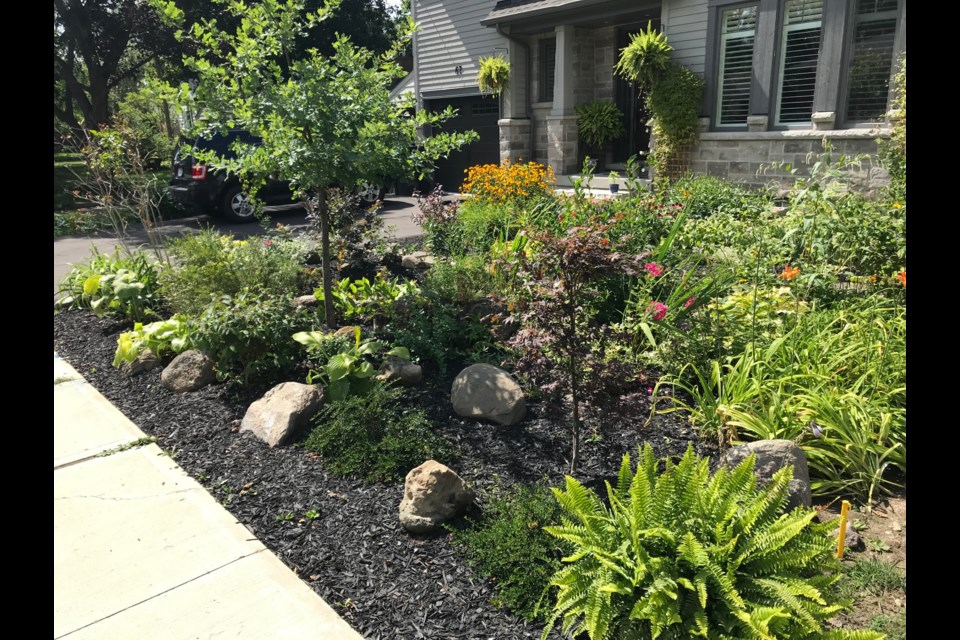If you want to rock your world this fall, now is the time.
With unpredictable weather patterns and the business of today’s lifestyles, the traditional garden and the maintenance of ‘the green, green grass of home’ is starting to lose its appeal.
And in Guelph and surrounding areas, the idea of the rock garden is continuing to grow.
“Rock gardens have become more popular in the last 20 years,” says Julie Clancy, who helps manage Belgian Nursery just outside of Guelph.
“Smaller gardens especially are very popular. They are because you only really need to weed twice a year. And you don’t need to fertilize and water as often you have to with a lawn.”
Contrary to what many might think, a rock garden isn’t simply a garden filled with rocks.
It can have plants and flowers too.
Rock gardening, also referred to as alpine gardening, typically involves small compact plants, poor soil with good drainage and, rocks.
Rock gardens can offer a relaxing and beautiful space to any yard and by carefully selecting the right rocks and the best plants to put in between them, a low maintenance area can be created offering a relaxing and beautiful space in any yard.
And autumn is the best time to construct your rock garden according to Clancy.
“Now is the time to set your foundation and get it prepped and then in spring, you are ready to plant,” Clancy said.
Spring is the optimum season to plant an extensive range of plants which can then establish themselves for a growing season before being challenged by winter.
Whether someone is ready to devote a corner of their yard to creating a rock garden or planning to transform the entire space, its helpful to first sketch a plan.
Aim to use the most open position, away from overhanging trees or tree roots where plants will receive sun for the greater part of the day.
It is also important to choose a position where the drainage is ideal.
Rock gardens can be quite an investment in hard materials such as rock, stone, gravel and slate.
“We carry the potato sized type pieces but when looking for your bigger landscape pieces, a stone yard would be the place to go,” Clancy says.
Salvaged or second-hand natural stone can be purchased. Sandstone is suitable and widely available.
Construction of the rock garden may seem quite daunting but for smaller projects, it is quite feasible and can become a fun project for the entire family.
Something to consider is laying weed resistant fabric on the ground at first to prevent weed growth or laying down newspaper at first, can also do the trick.
Drainage is also key. A few inches of topsoil can be removed and then gravel, rubble or broken bricks can be mixed in to help the soil drain water more efficiently.
A random scattering of large and smaller rocks is ideal and can add to a more natural looking setting.
Once rocks are set, its important to place topsoil in between the rocks.
When selecting plants, the key is to choose plants based on the characteristics of the site.
Keeping soil type in mind is also vital as well as determining whether or not the garden gets full sun, partial sun or shade.
Lower growing clump-forming smaller plants work well in rock gardens such as Alpines and sedums and these plants display well against rocks.
“Sedums are ideal as well as Sempervivums. They are trendy right now because of their succulent look. You can also add a variety of perennials and garden statues like gnomes. There’s so many things you can do to make it your own,” Clancy said.
“Many of the plants used in rock gardens are drought tolerant meaning once they are established. They require a good system to begin with and like any new baby, plants need to be babied at first as well until they are established.”
Many gardeners aim to conceal visible ground or soil when planting a bed. Rock gardens are different because they aim to conceal visible ground or soil when planting a bed. Rock gardens are different because the aim is to display the background rocks as well as the plants themselves.
Ideally, rock garden plants should spread slowly, to give them a space to grow.
While many rock gardens tend to be very independent, weeding might still necessary every few days.
Ants might also become a pest in between the rocks but ant killer can be purchased at any local garden centre.
Rock gardens can add texture, depth and drama to any outdoor space. They can define pathways or elevate hilly terrain.
Besides being low maintenance, a rock garden can make a yard feel larger while adding diversity.
It’s also very hard to kill a rock garden. Just some light watering and occasional weeding is all that’s needed, and they look great, all year round.


.png;w=120;h=80;mode=crop)
